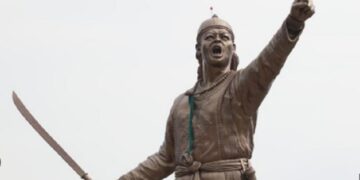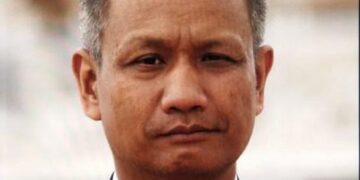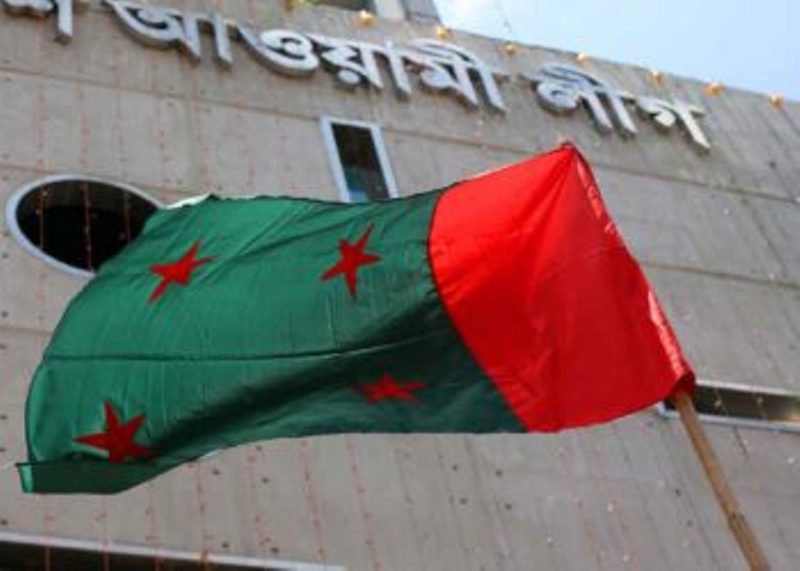In the 1960s, the Ayub Khan dictatorship in Pakistan went after it, determined to weaken it through persecution to a point where it would not be able to wield influence in national politics. It survived, for its progressive politics drew into it large sections of the people, for it spoke for an entire nation.
In 1971, it was witness to the premeditated killings of its senior leaders, grassroots activists and followers when, once the Pakistan military regime clamped a ban on it and launched a genocide in Bangladesh, the occupation Pakistan army went after it in all its fury. And yet it built up resistance, organized a petrified nation in a momentous struggle for national liberation. It emerged from the ordeal with justified pride.
We speak of the Awami League. In an era where it is once again the target of malevolent forces, where sinister efforts are again being made to obliterate it and its legacy, it is imperative that the history of the Awami League be retold to our people and beyond them to the world at large.
The unelected and unconstitutional regime now in place in Bangladesh has clamped a ban on the activities of the nation’s largest and oldest political party. We speak, yes, of the Awami League, the political organization which spearheaded the Bengali movement for autonomy in the pre-1971 period, when Bangladesh was the eastern province of Pakistan. We speak of the Awami League as it unified the Bengali nation in a well-formulated and well-strategised movement for the liberation of the country from Pakistan through an armed guerrilla struggle in 1971.
In unambiguous terms, the Awami League, for all its flaws and stumbles at given periods in its progression from its birth to the difficulties it is up against in these dark times in Bangladesh’s history, has consistently been the embodiment of Bengali nationalism. It has and is symbolic of patriotism, of the insistent urge for democracy based on secular principles in the country.
As the nation prepares, in these times that are a throwback to medievalism brought on by organized mob rule in Bangladesh in the past ten months, to observe the founding anniversary of the Awami League, it is only proper that the intertwined history of the party and the nation it led to freedom be assessed in the larger interest of its 180 million people.
The place of the Awami League in Bangladesh’s history has been an enviable one. As the nation observes its founding anniversary on 23 June, it is well and proper to look back at the story it has scripted for itself since June 1949. There is pain and then there is pleasure in that story. There is the record of the huge advances made by its leaders over the decades.
In the beginning, there was Moulana Abdul Hamid Khan Bhashani, who, along with Huseyn Shaheed Suhrawardy, felt early on in Pakistan that the Muslim League was swiftly turning into a feudal, self-serving organization. And thus was the Awami Muslim League forged into shape, a party of Muslim League dissidents who believed that the genesis of Pakistan, the promise of a democratic state, was under threat at the hands of Mohammad Ali Jinnah’s successors.
But the Awami Muslim League did not or would not replace the Muslim League, in that strictly communal sense of the meaning. The spur that pushed it into taking a new path along the forked road of politics was the growing nature of the language movement in East Bengal. February 1952 was to be a watershed. By the middle of the decade in 1955, the party would reach out to all classes and all denominations of citizens, as the Awami League. There was boldness in a jettisoning of the term ‘Muslim’ from its name. Pakistan, after all, was a Muslim state, implicit in whose philosophy was the second-class nature of its Hindus, Christians, Buddhists, tribals and others.
Having shed its communal skin, the Awami League became the force to beat in public opinion, at the election booths. Its leader Suhrawardy assumed a pre-eminent role at the centre. In the province of East Bengal-turned-East Pakistan, it was to be either the ruling party or a powerful opposition. And yet it would face a major crisis in terms of ideology. Suhrawardy, naively suggesting that the 1956 constitution had given East Pakistan ninety-eight per cent autonomy, then gave foreign policy a patently pro-Western sheen and substance. An outraged Moulana Bhashani walked out to reinvent himself as the chief of a new organization, the National Awami Party (NAP). That was post-Kagmari 1957.
The Awami League was much sinned against in the decade-long rule of Field Marshal Mohammad Ayub Khan between October 1958 and March 1969. Banned under martial law, it would re-emerge in 1962 but only as part of an alliance of opposition political parties. Placed under arrest and then freed, Suhrawardy left the country to die in Beirut in 1963. Earlier, a leading figure of the party, Shamsul Haq, went missing along the way, figuratively speaking. He would die sad and forlorn. Meanwhile, power in the party clearly was beginning to pass into the hands of a radical group of young leaders headed by Sheikh Mujibur Rahman. In early 1964, Mujib revived the Awami League and moved out of the front of the collective opposition.
A defining moment for the Awami League came in February 1966, when Sheikh Mujibur Rahman placed a Six-Point plan of regional autonomy for Pakistan’s federating provinces at a conference of opposition leaders in Lahore. It left the remnants of the old party leadership, personified by the likes of Nawabzada Nasrullah Khan, horrified. It created consternation among the other opposition parties. And it pushed President Ayub Khan into threatening to employ the language of weapons against the party. Mujib, along with his young associates, was once again in prison by May 1966. That did not prevent Mizanur Rahman Chowdhury and Amena Begum, two young leaders of the party, from organizing an unprecedented general strike in support of the Six Points throughout East Pakistan on 7 June 1966.
By January 1968, Sheikh Mujibur Rahman would be the principal accused in the Agartala Conspiracy Case instituted by the regime against him and thirty-four Bengali civilian and military personnel. His party was under relentless assault. Increasingly subjected to brutality, the party struggled to hold on to relevance. It took the blows patiently. A year later, it was marching back to life in freedom as popular support replenished its energy. A free Mujib, once the conspiracy case was withdrawn, became Bangabandhu. He travelled to Rawalpindi for a round table conference, a leader on the march.
Bengali support for Bangabandhu and his party came through the electoral triumph of December 1970. A year later, the Pakistanis having murdered three million Bengalis, Bengali politics having taken to guerrilla warfare, Bangladesh was a free people’s republic. Three and a half years later, in early 1975, Baksal took over where the Awami League had been. Disaster struck only months later. Bangabandhu and the four leaders of the Mujibnagar government were shot down, in a coup engineered by the rightwing Awami League’s Khondokar Moshtaque Ahmed, in the period August-November 1975.
In the darkness between August 1975 and May 1981, it was back to struggle. Mizan Chowdhury and Dewan Farid Gazi held their factions together. And then there was Zohra Tajuddin, who bravely fought on until Sheikh Hasina took charge in 1981. She took the party back to power twenty-one years after the carnage of 1975. And Hasina has been there since, as the longest surviving leader of the party, even in her exile in Delhi these days.
Despite everything, the centre has held for the party. Things have not fallen apart. It has survived. Yet it must survive better, through returning to its old reputation, through developing new tiers of leadership able to restore the old glory of it, for the Awami League is an inclusive organization reaching out to all citizens of Bangladesh.
ALSO READ: Bangladesh: Where history is under organised assault
The Awami League matters, for it is representative of Bangladesh’s history. Its leaders, activists and supporters have over the decades increasingly deepened its roots across Bangladesh. In these days of Bangladesh’s existential crisis, the road to the restoration of the values of the War of Liberation is the course the Awami League must follow.















